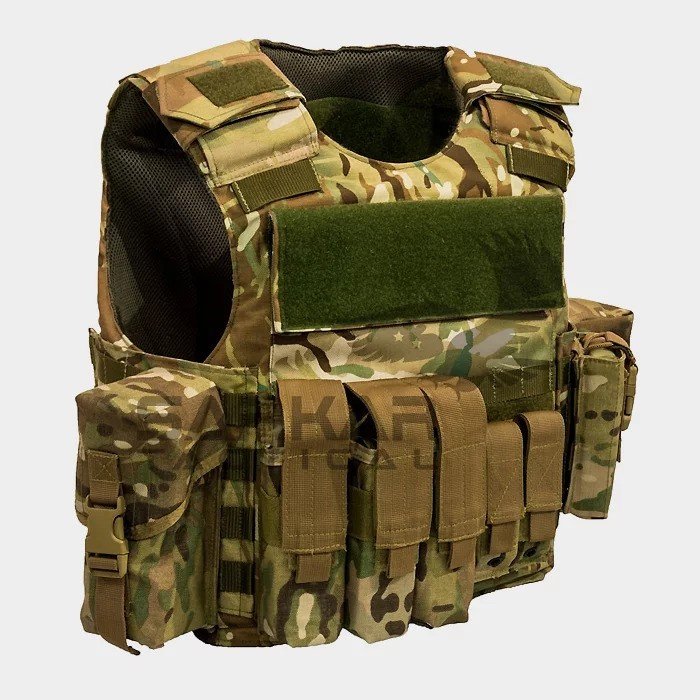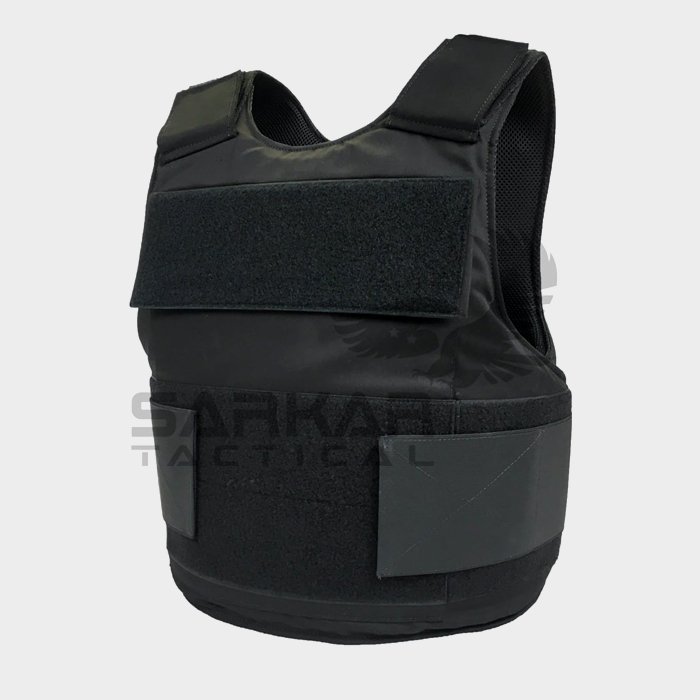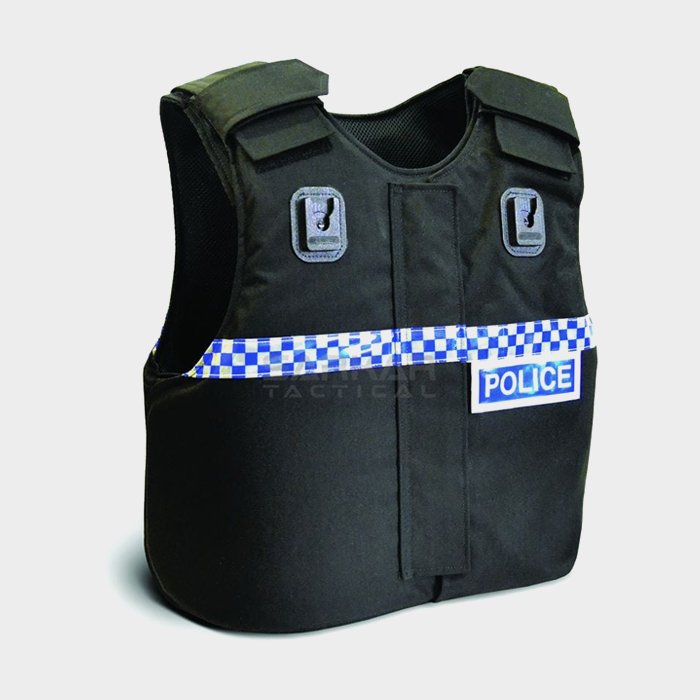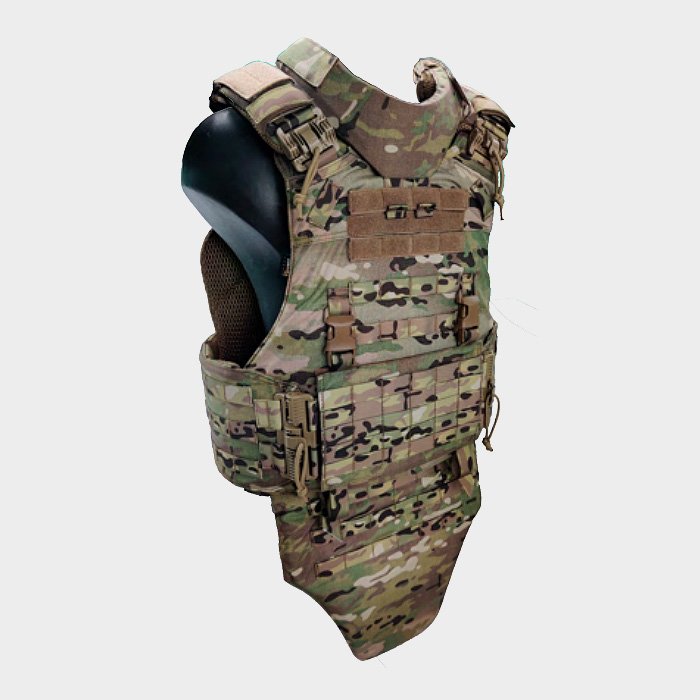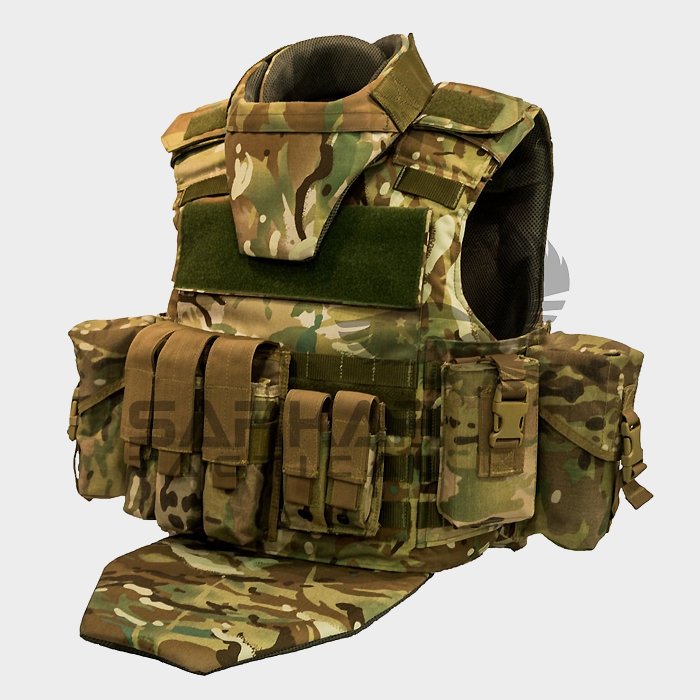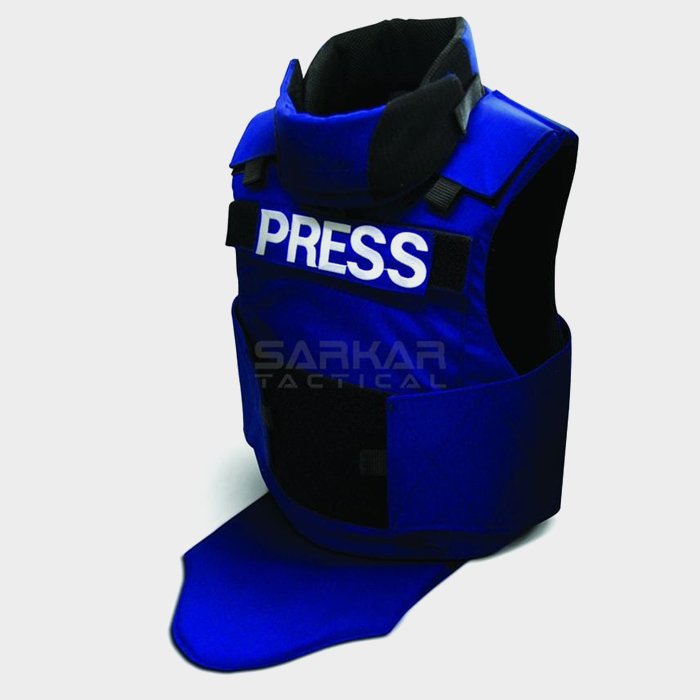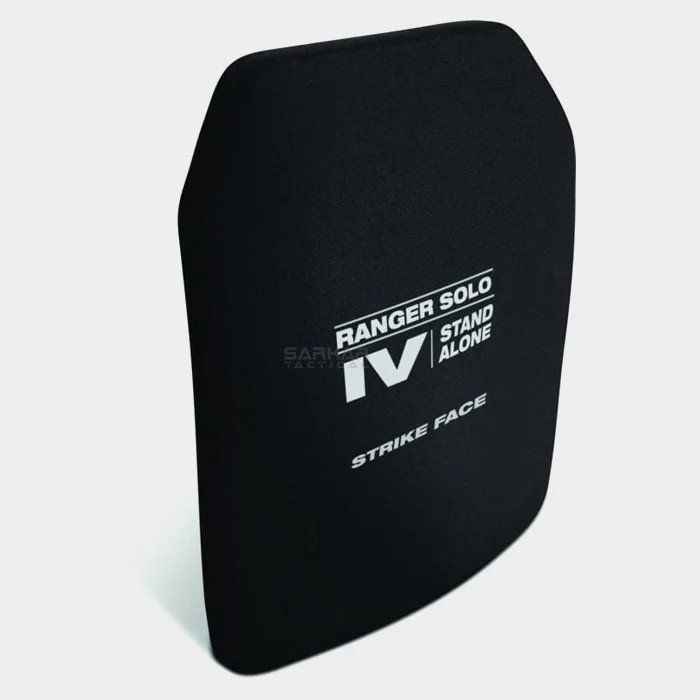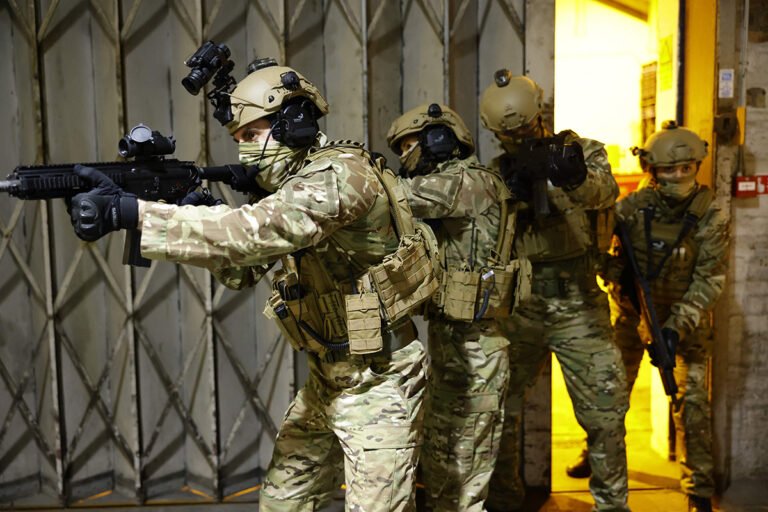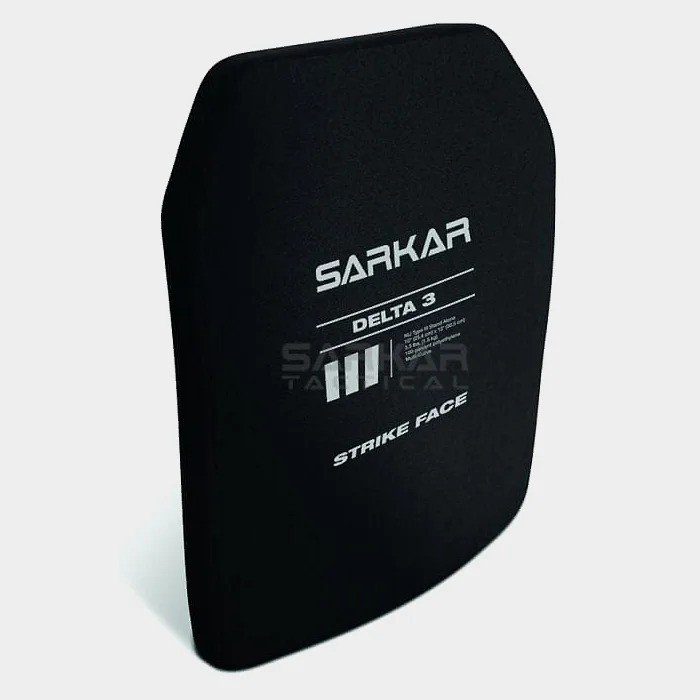Throughout recent history, there have been continuous technological advancements made to the science behind protective armour. People who work in the police force, security details, the military, and special forces all understand the critical importance of wearing professional gear. It can be a determining factor in the safety and well-being of many individuals in the field.
But, what are bulletproof vests made of?
In this article from the experts at Sarkar Tactical, we will look in detail at the composition of bulletproof vests and their ability to withstand high-velocity projectiles. Discovering what materials make up these vests, and how they absorb the force of a ballistic round, preventing penetration to the body, is key to understanding their effectiveness.
Table of Contents
- What Materials are Bulletproof Vests Made of?
- Ballistic Bulletproof Vest Designs
- NIJ: The Five Levels of Ballistic Protection
- Ballistic Material Glossary
- Conclusion
- FAQs
What Materials are Bulletproof Vests Made of?
Bulletproof vests, also known as ballistic vests or body armour, are typically made from vest-shaped panels of advanced plastic polymer, composed of numerous layers of high-strength ballistic material. Most commonly this is Kevlar, Polyethylene (PE), Spectra Shield, Twaron, Dyneema, Steel, or Ceramic.
Kevlar is often the preferred choice of material for bulletproof vests due to its high impact resistance, strength, durability, and low weight. These characteristics make it the ideal choice for bulletproof vests in comparison to potential alternatives.
The Different Layers of Protection
There are three main layers of protection which make up the composition of a bulletproof vest:
Ballistic Material
The layers of woven Kevlar vest are skillfully sewn together using Kevlar thread, ensuring the robustness and strength of the garment’s structure. Other non-woven materials that are used, such as Spectra Shield, undergo a polymer coating process, where resins such as Kraton help to strengthen the fibres before they are sealed between two layers of PE.
Outer Shell
The ballistic panels provide the majority of the all-important protection, however, the garment still needs to be comfortable to wear. To ensure this, the panels are placed within an abrasion-resistant polyester/cotton blend, or nylon fabric shell.
Some bulletproof vests are fitted with additional built-in pouches designed to hold hard armour plates as part of the outer shell. These help to keep personnel safe in even the most dangerous environments, providing extra protection from ballistic threats, stabs and spikes, and more.
Trauma Reduction Layer
The inside of the shell is fitted with a shock-absorbing material, as well as additional nylon padding to provide additional protection from trauma. This includes damage from blunt-force objects, as well as motor vehicle collisions.
Ballistic Bulletproof Vest Designs
The Sarkar Advanced Tactical Vest (ATV) is a battle-ready high-speed vest system designed exclusively for direct combat…
NIJ: The Five Levels of Ballistic Protection
Whilst the majority of bulletproof vests follow the same fundamental design as described above, the choice of material can massively impact the effectiveness of the armour in certain scenarios. One of the main ways you can categorise bulletproof vests is by their level of protection.
The National Institute of Justice (NIJ) has established a standardised classification system that categorises these vests into five levels of protection (IIA, II, IIIA, III, IV) based on their ability to withstand ballistic impact, and the type of ammunition the armour can resist against. This classification ensures that users can make informed decisions about the level of protection required for their specific needs.
The “A” in the levels “IIA” and “IIIA” indicate that the ballistic vest is stronger and more effective than the level below, but it doesn’t meet the requirements to be classified as the level above. An easy way to think of the “A” is as a half. For example, Level IIA = Level 1.5.
Read our full guide to the different levels of body armour.
Level IIA
Resistant against: Low-velocity 9mm and .40 rounds.
Suitable for: Covert operations, and concealed carry scenarios.
Description: Very discreet and lightweight.
Level II
Resistant against: Higher-velocity 9mm and .367 Magnum rounds.
Suitable for: Police officers and security teams facing handgun threats in their line of duty.
Description: Lightweight and comfortable.
Level IIIA
Resistant against: Powerful handgun ammunition, including .44 Magnum rounds.
Suitable for: Police and law enforcement teams who frequently operate in high-risk environments.
Description: Designed to be flexible and comfortable despite a higher level of protection.
Level III
Resistant against: Intermediate calibre rounds from rifles, such as 7.62mm rounds.
Suitable for: Professionals working in environments where rifle threats are present.
Description: Increased ballistic protection comes at a cost of additional weight. Whilst still comfortable, users must balance protection and mobility based on their specific requirements.
Level IV
Resistant against: Armour-piercing rifle rounds.
Suitable for: At the highest level of ballistic protection, these vests are reserved for personnel working in the highest-risk scenarios, such as military situations or tactical operations.
Description: These are examples of the heaviest bulletproof vests on the market, but they offer the greatest protection by far.
Ballistic Material Glossary
As we’ve learnt, ballistic material is the main element of bulletproof vests which is responsible for protecting the wearer from projectiles. Below is a description of each material and their unique characteristics:
Kevlar
Kevlar is a synthetic fibre with exceptional tensile strength. Its remarkable toughness and resistance to impact make it a popular choice for many ballistic applications. Additionally, Kevlar is known for its lightweight and flexible nature, providing a balance between protection and mobility.
Spectra Shield
Spectra Shield is a high-performance polyethylene material known for its strength-to-weight ratio. It offers excellent resistance to chemicals and UV radiation. This ballistic material is prized for its lightweight properties, making it suitable for applications where reduced weight is crucial without compromising on protection.
Polyethylene (PE)
Polyethylene is a thermoplastic polymer valued for its lightweight and flexible characteristics. In ballistic applications, PE provides durability and the ability to withstand multiple impacts. Its versatility makes it a common choice for a range of protective solutions, offering both strength and flexibility.
Twaron
Twaron is a para-aramid synthetic fibre renowned for its high strength and heat resistance. It exhibits exceptional resistance to abrasion and chemicals. Twaron is utilised in ballistic applications for its robust and durable nature, contributing to the creation of lightweight yet strong protective materials.
Dyneema
Dyneema, formerly known as Bynema, is a high-strength polyethylene fibre. It is recognised for its outstanding tensile strength and is employed in ballistic applications to create lightweight and robust protective materials. Dyneema offers notable resistance to abrasion and impact.
Steel
Steel, a versatile metal used in a huge variety of contexts, is a traditional ballistic material known for its durability and hardness. It provides effective protection against high-velocity projectiles. While heavier compared to some modern alternatives, steel remains a reliable choice for ballistic applications due to its toughness and ability to withstand powerful impacts.
Ceramic
Ceramic materials, such as boron carbide and alumina, are characterised by their hardness and ability to dissipate the energy of incoming projectiles. Ceramics break up upon impact, reducing trauma to the wearer. These materials are often used in composite armour systems, enhancing overall ballistic protection.
Final Takeaways: What Are Bulletproof Vests Made Of?
- Bulletproof vests are made from vest-shaped panels of advanced plastic polymer, composed of materials such as Kevlar, Polyethylene (PE), Steel, Ceramic, and more.
- The outer shell is made from abrasion-resistant fabrics, such as polyester/cotton blends, or nylon.
- Based on the composition of bulletproof vests, they are classified into five levels of ballistic protection (IIA, II, IIIA, III, IV) as per the National Institute of Justice.
Related Articles
- The full guide to protective armour
- What is tactical gear?
- What is a plate carrier?
- How to set up a plate carrier
- What are the different levels of body armour
FAQs
Do Bulletproof Vests Expire?
Yes, bulletproof vests have a limited lifespan due to factors like wear, tear, and material degradation. Manufacturers often recommend replacing them every 5-10 years, even if not visibly damaged, to ensure optimal protection.
Do Bullet Impacts Still Hurt With a Bulletproof Vest?
While bulletproof vests can prevent penetration and serious injury, they don’t eliminate all impact force. Users may still feel significant trauma, bruising, or even fractures, especially with high-velocity rounds. The vest’s purpose is to save lives, unfortunately, it cannot eliminate all discomfort.
Can a Bulletproof Vest Stop a Knife?
Most bulletproof vests are not designed to stop knife attacks effectively. While they may offer some protection, specialised stab-resistant vests with added layers or different materials are recommended for knife defence. Regular bulletproof vests might not provide adequate protection against sharp objects.

